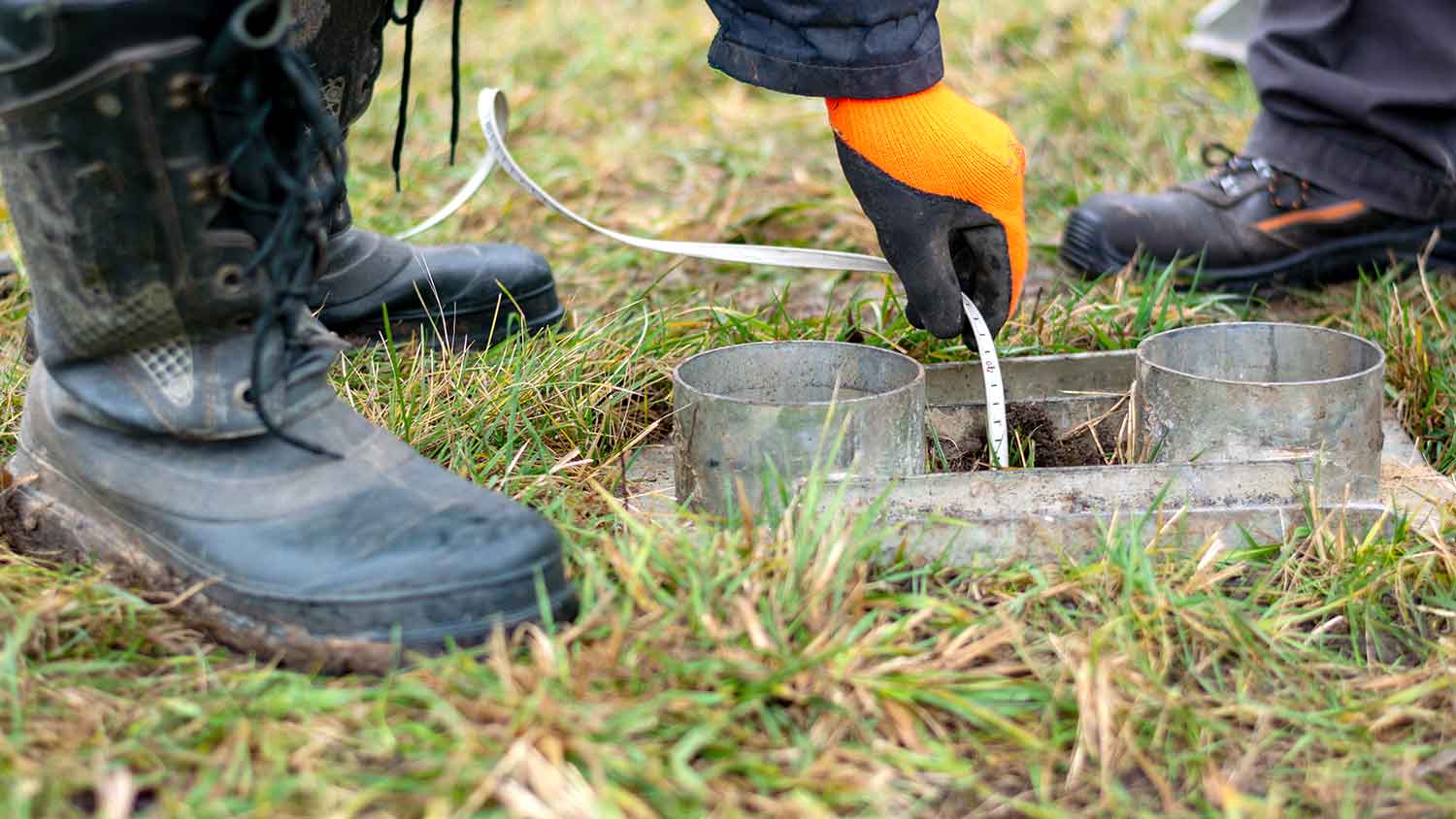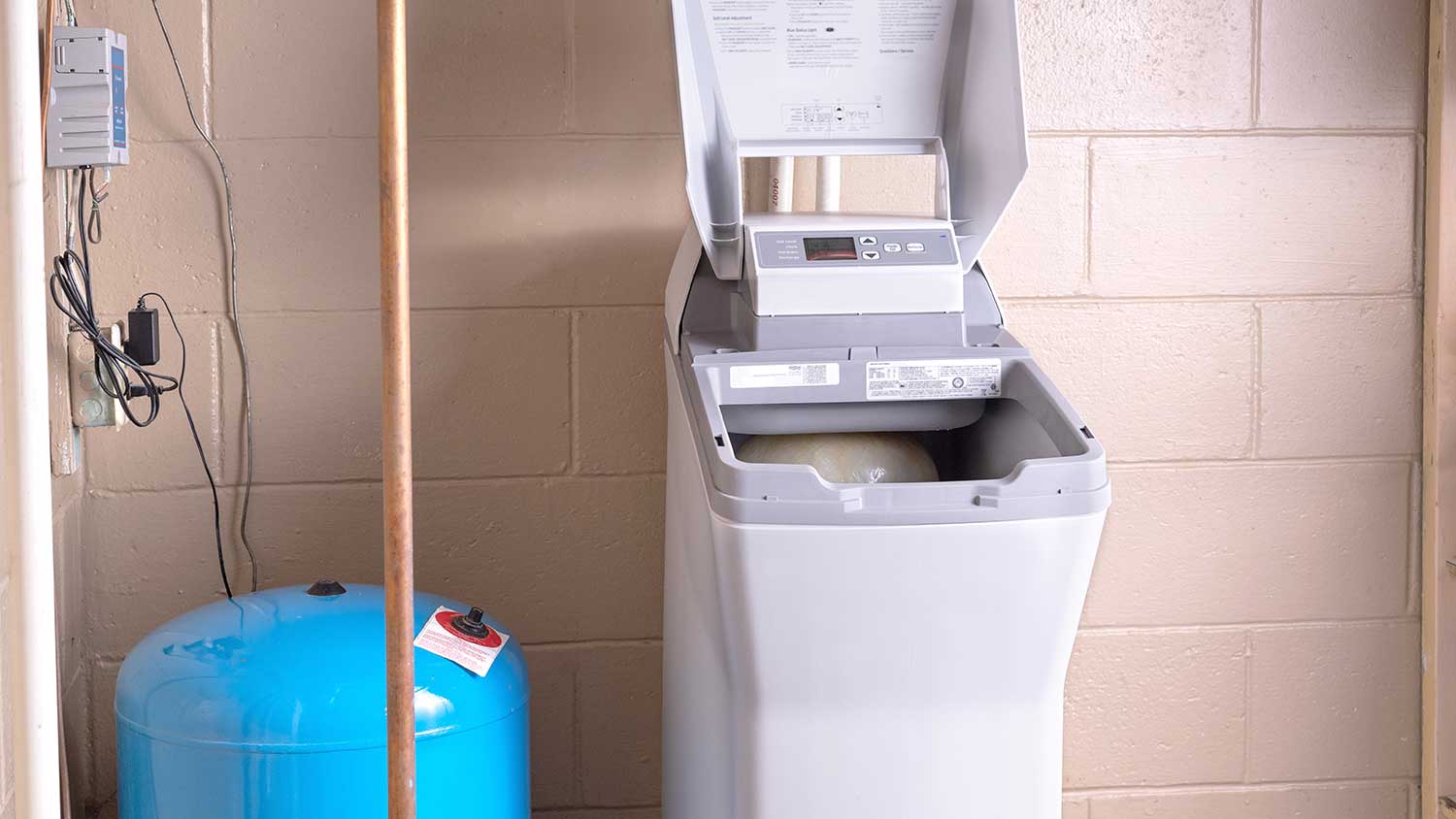
Well pumps require electricity to operate and can affect your monthly bill. Learn about the factors that impact the average cost to run a well pump per month.
Bubble, bubble—but don’t worry, it’s not that much toil or trouble


Well water could appear bubbly due to water pressure changes, dissolved gases, sediment, a low water level, or hard water.
If hard water is to blame, you can install a water softener system, which costs $1,500 on average.
In many cases, cloudy and bubbly well water is still safe to drink, but it’s always safest to test your water.
A watched pot might never boil, but when it comes to the well water traveling out of your tap, you probably aren’t eager for unexpected bubbling or cloudiness. The good news is that there are several common (and not-so-scary) causes for well water appearing cloudy and bubbly—and just as many achievable fixes. Below, we’ll walk you through them all so that you can be well on your way to fresh, clean water.
Your water is under some amount of pressure as it travels through your plumbing system, and that pressure can cause air to become trapped or dissolved. External fixtures like water filters can also introduce air into the system. Then, when it comes out of your tap, the water in your glass might look cloudy and effervescent.
If your well water has been still and silent for a long time but suddenly comes out of your tap bearing bubbles, you may rightfully wonder what’s wrong. A change in water pressure might be to blame, and the issue could be your pipes.
If the problem is just trapped air, yes, your well water is still safe to drink—though it’s always a good idea to regularly test your well water. (City water is tested often, sometimes daily or even hourly.)
As far as fixing the problem, a well and pump contractor near you will know how to get air out of water lines in your well. If you’re a confident DIYer, you can check any easily accessible plumbing fixtures on your own for looseness or other changes.

If the water level in your well becomes very low, that may also lead to cloudiness or bubbles in your water as the well pump works double-time to suck up what little water is left.
Again, so long as your well water has been tested, a low water level doesn’t impact the drinking safety of the water. However, this problem may occur more commonly with older wells, which are more prone to several issues, like contaminants.
If you’re seeing cloudiness in your drinking water because of low well water levels, make an effort to conserve water in your home and call a pro to inspect your well to see if it’s on its way to drying up. A well inspection will cost between $250 and $550.
Suspended solids, also known as sediment, can certainly make the water in your glass look cloudy. After all, if this is the problem, there is a literal cloud of clay, sand, or another mineral floating around in there that was picked up on the water’s way from your well to your faucet.
An easy DIY test for this problem is to leave a glass of water out overnight. In the morning, if you see physical solids at the bottom of the glass, sediment is the issue.
Sediment itself is not harmful, but it may taste less than pleasant. Additionally, if you have lead pipes (the installation of which was banned in the U.S. in 1986, according to the Environmental Protection Agency), sediment can erode them over time and increase the levels of lead dissolved in your water, which can be hazardous to your health.
Suspended solids can be the result of a variety of problems, including a well pump picking up sand from the bottom of the well or a faulty well screen (also known as a well casing). Again, a pro can help you assess the situation, and in some cases, the fix may be as simple as adding a filter.

Hard water refers to water with a lot of dissolved minerals in it, like calcium and magnesium. Hard water has a variety of effects: It can look cloudy in your glass, leave scale or stains on fixtures like your toilet or faucet, and even reduce the effectiveness of your soap.
Hard water may be the problem if you’ve noticed other hard water symptoms, like cloudiness in your glass that doesn’t quickly resolve itself.
Hard water is safe to drink and might actually even supplement your calcium or magnesium intake. Because well water comes from, well, the ground—where minerals like calcium and magnesium live—hard water is a pretty common issue with wells. Fortunately, the solution is simple: You can install a water softening system, which costs $1,500 on average.
Bubbles are often plain ole dissolved air. In some cases, however, the bubbles are dissolved gases.
Methane is a common natural gas that can be in well water, especially if your well is situated near wetlands, a landfill, or another natural gas source. Methane causes a fizzling sound as it dissipates, which can help you figure out what’s going on. Other gases that might be present include carbon dioxide (which can occur after a change in temperature) and sulfur (which you should be able to smell–anyone in the mood for eggs?).
If you suspect dissolved gases are the culprit of your cloudy and bubbly well water, call a pro for inspection. Methane runs the risk of flammability at high enough concentrations, and carbon dioxide can increase the acidity of your water and erode your plumbing system over time. Sulfur could mean certain types of bacteria are present, so if you smell rotten eggs in your water, be sure to test it (and drink bottled water for the time being just to be safe).
From average costs to expert advice, get all the answers you need to get your job done.

Well pumps require electricity to operate and can affect your monthly bill. Learn about the factors that impact the average cost to run a well pump per month.

Drilling a well is no small feat. You’ll need to plan for excavating, a pump, and more. This guide will help you estimate and manage your well drilling costs.

Your solar well pump cost depends on your well depth and flow rate. Explore these cost factors and more to budget for an eco-friendly pump.

You can check your well pump without removing it from the well. DIYers can check the power and pressure, prime the pump, and even thaw a frozen well pump.

What’s the difference between utility pumps versus sump pumps? While they’re both useful for moving water, utility pumps are more versatile. Here’s how.

Learn how to make your cistern water drinkable with these quick DIY steps for a seamless transformation to private, clean, potable water.